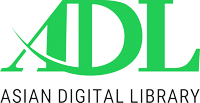Mode of Taliban diplomacy before and after the US withdrawal: A geopolitical and economic perspective
DOI:
https://doi.org/10.71085/sss.04.03.320Keywords:
Taliban, US Withdrawal, Political Diplomacy, International Stakeholders, AfghanistanAbstract
Almost twenty years Afghanistan seems to have witnessed the tug of war between Taliban and Afghan government. These bloodiest years had significantly transformed the geo-political landscape of the country also, left long lasting impacts on the internal peace of the country. Rather than remove the dichotomy between the states this land has created a vacuum which later filled by international power such as Russia, Iran, USSA and now china. So by understanding the geography and the role of international stakeholders in Afghanistan this research paper analyzed the ongoing changes and the factors that led to the establishment of post-Taliban regime in this area as well as to drawing attention to the fragile central state it examines the mode of Taliban diplomacy after US withdrawal.
Downloads
References
Rashid, A. (2000). Taliban: Militant Islam, oil and fundamentalism in Central Asia (pp. 22–27). Yale University Press.
Barfield, T. (2010). Afghanistan: A cultural and political history (pp. 254–259). Princeton University Press.
Marsden, P. (2002). The Taliban: War and religion in Afghanistan (pp. 41–44). Zed Books.
Giustozzi, A. (2008). Koran, Kalashnikov and laptop: The neo-Taliban insurgency in Afghanistan (pp. 20–25). Columbia University Press.
Abbas, H. (2007). Pakistan’s drift into extremism: Allah, the army, and America’s war on terror (pp. 186–190). M.E. Sharpe.
Rashid, A. (2010). Descent into chaos: The U.S. and the disaster in Pakistan, Afghanistan and Central Asia (pp. 242–248). Penguin Books.
Jackson, A. (2021). Negotiating survival: Civilian-insurgent relations in Afghanistan (pp. 137–144). Hurst & Company.
Gopal, A. (2024). The good man is not alive: The United States, the Taliban, and the war through Afghanistan’s eyes (pp. 15–18, 112–119, 311–316). Metropolitan Books.
Morgan, L. (2010). State building in Afghanistan: Evidence of limitations. Journal of International Affairs and Development, 12(2), 45–62.
Saikal, A. (Ed.). (2019). Modern Afghanistan: A history of struggle and survival (2nd ed., pp. 98–112). I.B. Tauris.
Jalali, A. A. (2016). Afghan National Defense and Security Forces: Missions, challenges, and sustainability (pp. 41–59). National Defense University Press.
Hakimi, A. (2015). The transition of power and sovereignty in Afghanistan. In L. E. Harrison & P. Berger (Eds.), Local governance in Afghanistan: A view from the ground (pp. 122–139). United States Institute of Peace Press.
Gupta, R., & Mathew, S. (2022). A comparative study on women in Afghanistan: Pre-Taliban and post-Taliban governments. Journal of Gender and Politics in Asia, 14(1), 55–78.
Salim, M., Khan, F. A., & Zikriya, M. (2019). Afghanistan as a transport hub: Potential and challenges. Journal of Economic Policy and Research, 14(2), 45–60.
Barfield, T. (2012). Afghanistan: A cultural and political history. Princeton University Press.
Giustozzi, A. (2019). The Taliban at war, 2001–2018. Hurst.
Giustozzi, A. (2021). The Taliban and the Belt and Road Initiative: Myths and realities. In A. Saikal & K. Nourzhanov (Eds.), The Taliban and the crisis of Afghanistan (pp. 194–196). Hurst.
Jackson, A. (2021). Negotiating survival: Civilian–insurgent relations in Afghanistan. Hurst.
Mansfield, D. (2022). A state built on sand: How opium undermined Afghanistan (pp. 3–5, 163–175). Oxford University Press.
Pant, H. V. (2022). The US pivot and Indian foreign policy: Asia’s evolving balance of power (pp. 45–48). Palgrave Macmillan.
Pantucci, R., & Lain, S. (2022). China’s war on terror: Counter-insurgency, politics and identity on the Uyghur frontier. Routledge.
Rashid, A. (2012). Pakistan on the brink: The future of America, Pakistan, and Afghanistan. Viking.
Rose, G. (1998). Neoclassical realism and theories of foreign policy. World Politics, 51(1), 144–172. https://doi.org/10.1017/S0043887100007814
Rubin, B. R. (2013). Afghanistan from the Cold War through the War on Terror (2nd ed.). Oxford University Press.
Rubin, B. R. (2021). Afghanistan: What everyone needs to know (3rd ed.). Oxford University Press.
Saikal, A. (2012). Modern Afghanistan: A history of struggle and survival. I.B. Tauris.
Semple, M. (2009). Talking to the Taliban: Towards a solution for the Afghan conflict (pp. 10–14). Royal Institute of International Affairs.
Byrd, W. (2015). Afghanistan’s economy: The challenges of transition. United States Institute of Peace, 5–9.
Dos Santos, T. (1970). The structure of dependence. The American Economic Review, 60(2), 231–236.
Giustozzi, A., & Semple, M. (2022). Taliban at the crossroads: Insights from internal documents. RUSI Journal, 167(1), 92–94. https://doi.org/10.1080/03071847.2022.2041077
Hu, Z., & Lu, D. (2016). China’s One Belt One Road strategy and geopolitical implications for South Asia. South Asian Studies, 31(2), 117–124.
Medeiros, E. S. (2005). Strategic hedging and the future of Asia-Pacific stability. The Washington Quarterly, 29(1), 145–167.
Mustafa, I., & Bhatti, N. (2020). Peace through regional connectivity: China-Pakistan-Afghanistan trilateral cooperation. Journal of Political Studies, 27(2), 143–155.
Paul, T. V. (2005). Soft balancing in the age of U.S. primacy. International Security, 30(1), 46–71.
Felbab-Brown, V. (2023, February). The Taliban’s use of economic diplomacy. Brookings Institution. https://www.brookings.edu/articles/the-talibans-use-of-economic-diplomacy/
Jackson, A., & Bahiss, I. (2022, March). The Taliban’s approach to governance (Special Report No. 514). United States Institute of Peace. https://www.usip.org/publications/2022/03/talibans-governance-strategy
Jackson, A., & Bahiss, I. (2023, June 27). The Taliban’s new business model: Transactional diplomacy and regional entanglement (Report No. 335). International Crisis Group. https://www.crisisgroup.org/asia/south-asia/afghanistan/talibans-new-business-model
Ruttig, T. (2021, September). Taliban diplomacy: Smart strategy or lip service? Afghanistan Analysts Network. https://www.afghanistan-analysts.org/en/reports/war-and-peace/taliban-diplomacy-smart-strategy-or-lip-service/
Idrees, M. (2017). The geopolitical importance of Afghanistan: Natural resources and regional stability. Central Asia Journal, 81, 50–63.
Mustafa, I., & Bhatti, N. (2020). Peace through regional connectivity: China-Pakistan-Afghanistan trilateral cooperation. Journal of Political Studies, 27(2), 150–153.
Zhou, L., & Yuan, L. (2022). China's expanding presence in post-U.S. Afghanistan: Strategic interests and investment risks. Journal of Contemporary Asian Studies, 56(3), 299–315. https://doi.org/10.1080/00472336.2022.2049031
Dorronsoro, G. (2009). Revolution unending: Afghanistan, 1979 to the present (pp. 258–265). Columbia University Press.
Giustozzi, A. (Ed.). (2010). Engaging local voices on the Taliban insurgency. In Decoding the new Taliban: Insights from the Afghan field (pp. 206–223). Columbia University Press.
Rubin, B. R. (2013). Afghanistan from the Cold War through the War on Terror (2nd ed., pp. 291–293). Oxford University Press.
Weigand, F. (2022). Afghanistan: A battlefield of international legitimacy. In Armed groups and the politics of legitimacy (pp. 139–165). Routledge.
Hameed, S. (2014). Prospects for regional development and economic cooperation in the wider Central Asia region (pp. 3–7). Center for Strategic and International Studies (CSIS). https://www.csis.org/analysis/prospects-regional-development-and-economic-cooperation
International Crisis Group. (2022). Afghanistan: The humanitarian crisis and regional dynamics (pp. 10–12). https://www.crisisgroup.org
U.S. Department of State. (2020, February 29). Agreement for bringing peace to Afghanistan. https://www.state.gov/wp-content/uploads/2020/02/Agreement-For-Bringing-Peace-to-Afghanistan-02.29.20.pdf
Convention on the Rights and Duties of States (Montevideo Convention), Dec. 26, 1933, 165 L.N.T.S. 19, Art. 1.
Giustozzi, A. (2023). The Taliban and the outside world: Regional dynamics and the quest for legitimacy (pp. 18–21, 92–95, 103–106). Hurst & Company.
Stahn, C. (2022). The law and practice of international territorial administration: Versailles to Iraq and beyond (pp. 378–380). Cambridge University Press.
Talmon, S. (1998). Recognition of governments in international law: With particular reference to governments in exile (pp. 99–101). Oxford University Press.
Weller, M. (2022). Recognition of governments in international law: Emerging trends and challenges. In M. Weller & J. Hestermeyer (Eds.), Oxford handbook of the international law of global security (pp. 156–159). Oxford University Press.
Okano-Heijmans, M. (2011). Conceptualizing economic diplomacy: The crossroads of international relations, economics, IPE and diplomatic studies. The Hague Journal of Diplomacy, 6(1), 7–36. https://doi.org/10.1163/187119111X566742
Yousaf, K., & Jabarkhail, S. (2020). State recognition and legitimacy in international law: A case study of Afghanistan. Journal of South Asian Studies, 35(2), 112–117.
Mujahid, Z. (2022). Afghanistan’s strategic geography and regional economic integration. Afghanistan Policy Journal, 1(2), 24–27.
Afghanistan Research and Evaluation Unit (AREU). (2023). Infrastructure and regional cooperation under the Taliban (pp. 12–15). https://areu.org.af
Barr, H. (2023). Human Rights Watch World Report 2023: Afghanistan (pp. 52–56). Human Rights Watch. https://www.hrw.org
Hay, C., & Hamming, T. (2023). Taliban governance and legitimacy: Internal dynamics and external engagement (pp. 23–26). Centre for Conflict Analysis Reports, King’s College London.
International Crisis Group. (2022). Taliban rule in Afghanistan: Local and international dynamics (pp. 9–12, 15–17, 18–21). https://www.crisisgroup.org
Jackson, A., & Bahiss, I. (2022). The Taliban’s messaging war: How the movement communicates legitimacy (pp. 8–11). Afghanistan Analysts Network. https://www.afghanistan-analysts.org
Jackson, A., & Bahiss, I. (2023). The Taliban’s pragmatic diplomacy: Functional recognition in practice (Special Report, pp. 3–6). Afghanistan Analysts Network. https://www.afghanistan-analysts.org
Malik, N. (2022). Taliban propaganda and the jihadist media network (pp. 5–8). Tony Blair Institute for Global Change.
Pant, H. V. (2023). India and Afghanistan under the Taliban: Strategic dilemmas and cautious diplomacy (pp. 3–4). Observer Research Foundation.
Ruttig, T. (2022). Afghanistan’s neighbors and the Taliban regime: Stability over values? (Special Report, pp. 4–6). Afghanistan Analysts Network.
Ruttig, T. (2022). Taliban engagement and regional diplomacy: Between interest and instability (pp. 5–6). Afghanistan Analysts Network.
United Nations Development Programme (UNDP). (2022). Special Trust Fund for Afghanistan: ABADEI strategy overview (pp. 2–4). https://www.undp.org/afghanistan/publications/abadei-strategy-overview
United Nations Office for the Coordination of Humanitarian Affairs (Unocha). (2022). Afghanistan: Humanitarian response overview (pp. 5–7). https://reliefweb.int/report/afghanistan/afghanistan-humanitarian-response-overview-2022
Joscelyn, T. (2021). The Taliban–al-Qaeda nexus: A strategic alliance (pp. 2–4). Long War Journal. https://www.longwarjournal.org.
Downloads
Published
Data Availability Statement
Data sharing not applicable to this article as no datasets were generated or analyzed during the current study.


































